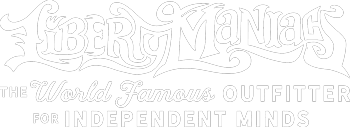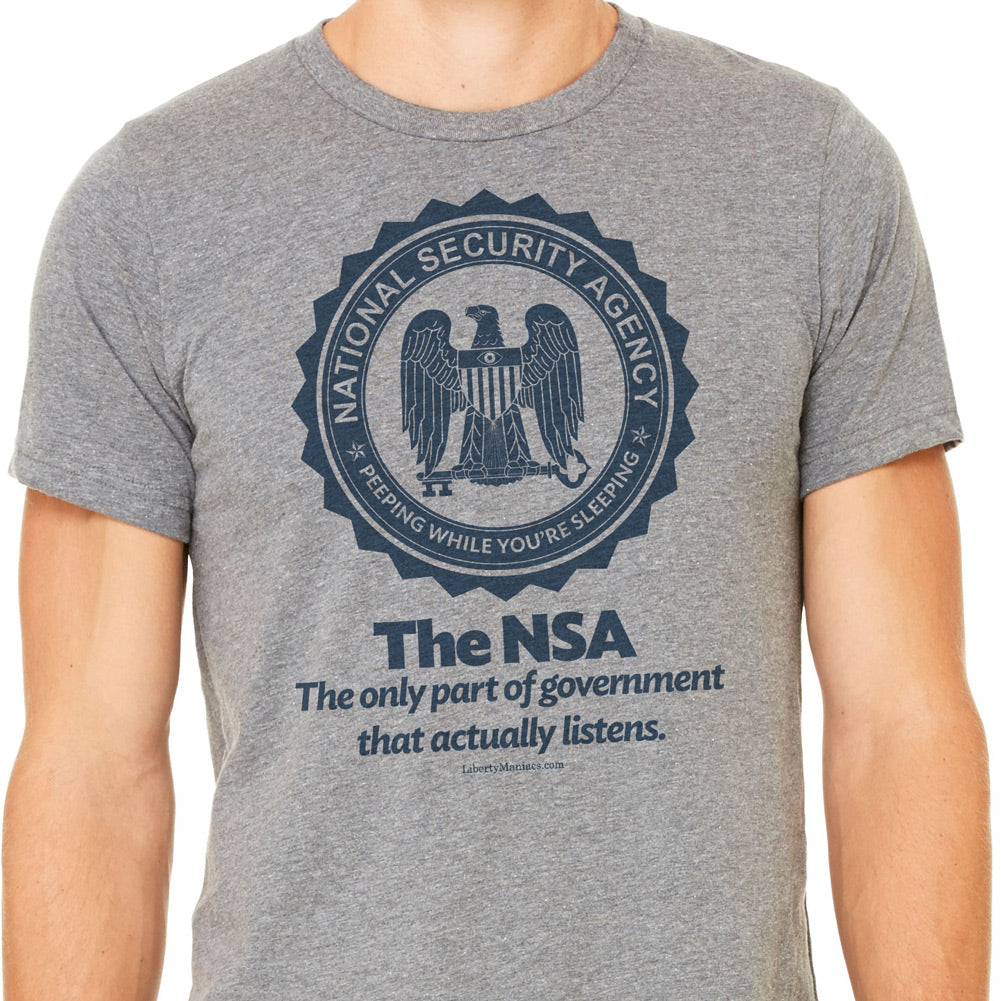Browse Categories
Add description, images, menus and links to your mega menu
A column with no settings can be used as a spacer
Link to your collections, sales and even external links
Add up to five columns
Add description, images, menus and links to your mega menu
A column with no settings can be used as a spacer
Link to your collections, sales and even external links
Add up to five columns
Silencing Dissent Through Marginalization
May 03, 2023 8 min read

What is Marginalization? Marginalization is the process by which certain individuals or groups are excluded or pushed to the periphery of society. This can happen in a variety of ways, including discrimination, scapegoating, and something called control of the narrative. But there are a number of ways people can be marginalized. In this article we will be talking about marginalization by those with power and influence on others.
But why do people marginalize others in the first place?
Powerful interests and governments often use marginalization as a tool to silence dissent and maintain control over their populations. Powerful people may marginalize others for a variety of reasons. Some of the most common reasons include:
-
Maintaining power and control: Marginalizing certain groups can help powerful people maintain their power and control over resources and institutions. This can include suppressing the voices and participation of marginalized groups in political, economic, and social decision-making.
-
Preserving privilege: Powerful people may also marginalize others in order to preserve their own privilege and status. This can include using stereotypes and discrimination to justify unequal treatment and access to resources.
-
Fear and prejudice: Powerful people may also marginalize others out of fear and prejudice. For example, some people may hold negative stereotypes about certain groups and may see them as a threat to their own way of life.
-
Economic and political gain: Marginalizing certain groups can also be a means of economic and political gain, for example, by exploiting the labor of marginalized groups, or by using them as scapegoats to deflect blame and distract from real issues. It's also common for collusion between government enforced commercial cartels to marginalize groups that challenge the legitimacy of their enterprise.
-
Preservation of the status quo: Powerful people may also marginalize others to preserve the status quo, by repressing alternative perspectives and suppressing dissent.
Whatever the reason, marginalization is a effective and common strategy to delegitimize people that threaten an existing status quo.
One of the most common forms of marginalization is discrimination. Discrimination can take many forms, such as discrimination based on race, ethnicity, religion, sexual orientation, political beliefs, or more recently vaccination status. The most obvious example of this is the treatment of African Americans during the Civil Rights Movement in the United States. The government and powerful interests systematically discriminated against African Americans through discriminatory laws and practices, such as segregation and voter suppression. They also infiltrated civil rights organizations with programs like COINTELPRO to discredit and control them. This discrimination made it difficult for African Americans to participate fully in society and effectively silenced their dissenting voices.
Another form of marginalization is scapegoating. This involves blaming certain groups or individuals for social or economic problems, and then using this justification to justify repressive measures against them. An example of this is the treatment of Jewish people in Nazi Germany. The Nazi government blamed Jewish people for Germany's economic and social problems, and used this as justification for their persecution, including the Holocaust.
Another tactic used to silence dissent is control of the narrative. This can include censorship of the media, control of education and academia, and the use of propaganda to shape public opinion. Most authoritarian regimes throughout history immediately understood the necessity of taking control of the media and schools. Top dissenting voices in the media and academia are quickly removed and made an example of to create a chilling effect across the profession.
The use of fear tactics is also a common way for powerful interests and governments to control the population. This can include spreading rumors of threats to national security, public health, or social stability. An example of this is the use of the government and pharmaceutical industry directing the media to frame everyone that didn’t believe mRNA treatments for COVID-19 were safe and effective as “anti-vaxxers,” “anti-science,” or “conspiracy theorists.”
The "Red Scare" in the United States during the Cold War was another fear tactic that the US government used to justify censorship, repression, and even some pretty deplorable secret experiments on citizens thought the CIA’s clandestine MKULTRA program. In each instance the government used fear of communism to justify repression of dissenting voices and to maintain control over the population.
The dehumanizing effect of marginalization also makes it easier for powerful interests and governments to justify repression against targeted groups. This dehumanization can take the form of derogatory language, stereotypes, and negative portrayals in the media. An example of this is the portrayal of Indigenous people as savages in colonizing societies, which was used to justify the displacement and genocide of Indigenous populations.
Types of Marginalization
-
Discrimination based on race, ethnicity, religion, sexual orientation, or political beliefs. An authoritarian government may label certain ethnic or religious groups as "enemies of the state" and then use this justification to target them for repression.
-
Scapegoating, which involves blaming certain groups or individuals for social or economic problems, and then using this justification to justify repressive measures against them.
-
Control of the narrative, which can include censorship of the media, control of education and academia, and the use of propaganda to shape public opinion.
-
Use of fear tactics to control the population, such as spreading rumors of threats to national security or social stability, or creating a sense of insecurity.
-
Dehumanization, which can take the form of derogatory language, stereotypes, and negative portrayals in the media.
-
Surveillance and repression, which can include monitoring citizens’ social media, phone and internet usage, as well as strict control over the media and censorship of dissenting voices.
-
Violence, through the use of imprisonment, torture, and extrajudicial killings are also used to silence dissenting voices.
-
Economic marginalization, where a government may use economic policies and practices that discriminate against certain groups of people, leaving them in poverty and unable to participate in the political and social spheres. (For example, redlining, which was a practice that when people who were in charge of selling and renting the houses would draw lines on a map to show which areas were off limits for certain "undesirable" people.)
-
Social marginalization, where a government may use social policies, such as segregation or exclusion from public spaces, to isolate and exclude certain groups of people. (Racially segregated schools, water fountains, bathrooms, etc.)
-
Cultural marginalization, where a government may attempt to suppress or erase a group's culture, language, or traditions in order to silence dissent and undermine their sense of identity. (Indian boarding schools in the 19th and 20th Century United States and Canada and Uighur Muslim minority in Xinjiang province of China today.)
The effects of marginalization can be devastating for individuals and groups that are targeted. Marginalized individuals and groups often experience poverty, lack of access to education, finance, healthcare, job opportunities, and are more likely to be victims of violence. It's long-term impact on a society can be difficult to fully quantify. While it can lead to social unrest, political instability, and even civil war and mass atrocities, it also can have innumerable unseen costs and broad unintended consequences.
One historical example of how the long-term effects of social marginalization resulted in civil war is the Rwandan genocide of 1994. The Hutu-dominated government of Rwanda, along with several Hutu extremist groups, systematically marginalized and dehumanized the Tutsi minority for decades, portraying them as a threat to national security and stability. This marginalization was perpetuated through discriminatory laws and policies, as well as through the use of state-controlled media and propaganda.
This marginalization created a climate of fear and mistrust among the Hutu majority towards the Tutsi minority. When the Hutu President Juvenal Habyarimana was killed in a plane crash in April 1994, Hutu extremist groups used this as a pretext to launch a genocidal campaign against the Tutsi population. The Hutu government and military, along with Hutu militias, orchestrated the killing of approximately 800,000 Tutsi and moderate Hutu.
Rwanda is an extreme example of what can happen when pervasive marginalization is allowed to continue in a society. Some of these effects may include:
-
Psychological effects: Marginalized individuals and groups may experience feelings of isolation, anxiety, and depression. They may also develop a sense of low self-worth and self-esteem, which can have a long-term impact on their mental health. This can lead to higher rates of chemical dependency, suicide, and even breakup of the family unit.
-
Social effects: Marginalized individuals and groups may experience limited access to social networks and resources, which can make it more difficult for them to participate in society and access opportunities. This can further reinforce their marginalization by strengthening the very stereotypes that make it more difficult for them to improve their social and economic status.
-
Economic effects: Marginalized individuals and groups may experience limited access to jobs and opportunities, which can lead to poverty and financial insecurity. This can make it more difficult for them to participate in the economy and access opportunities to improve their economic status.
-
Political effects: Marginalized individuals and groups may experience limited access to political power and representation, which can make it more difficult for them to have their voices heard and to advocate for policies that would improve their situation.
-
Historical trauma: marginalized groups often have a history of being oppressed, and the effects of that trauma can be passed down through generations, leading to a cycle of marginalization. These groups may experience a lack of trust in the government, institutions, and society at large, that can lead to a lack of participation in civic life.
-
Health effects: marginalized individuals and groups may experience limited access to healthcare and other services, which can lead to poor health outcomes. This can include higher rates of chronic diseases, mental health issues, and higher infant mortality.
-
Education effects: marginalized individuals and groups may experience limited access to education and other opportunities, which can lead to lower levels of educational attainment and fewer opportunities to improve their economic status.
Countering Marginalization
There are ways numerous ways to counter marginalization. One of the most effective ways is through education and awareness-raising. This includes educating people about the history and effects of marginalization, as well as raising awareness about the ways in which marginalization is currently being used to silence dissenting voices.
Another way to counter marginalization is through grassroots organizing and activism. This includes working with marginalized communities to build power and agency and use it to advocate for change.
These all generally depend on free speech and free expression as they are powerful tools for countering marginalization so that individuals and groups can speak out against injustices and discrimination, and to advocate for change.
-
Building inclusive communities: Creating spaces where individuals from diverse backgrounds and perspectives feel safe, valued, and respected. This can be digital spaces, real world communities, and organizations that provide support and open communication.
-
Promoting empathy and understanding: Helping people understand the experiences and perspectives of marginalized groups, and fostering a deeper understanding of the social, economic, and political factors that contribute to marginalization. Art and storytelling to build deeper widespread understanding using the creative arts to build empathy in the broader public put themselves in the marginalized group's shoes.
-
Supporting free speech and the principle of free expression: Allowing individuals and groups to speak out against injustices and discrimination, and to advocate for change.
-
Providing resources and support for marginalized groups: Such as education, health care, and housing. Charity with the aim of elevating the marginalized is a bedrock of civic life. It's that simple.
-
Challenging stereotypes and discrimination: Through education and awareness-raising, and by promoting positive portrayals of marginalized groups in the media and popular culture.
-
Holding those in power accountable: Holding individuals and institutions accountable for their actions and for the impact they have on marginalized groups.
-
Supporting grassroots movements: Supporting and empowering marginalized groups to lead their own movements and to advocate for their rights and interests.
Leave a comment
Also in Liberty Maniacs News

Enemies of Satire: How Liberty Maniacs Survived Censors, Lawsuits, and the Joke Police
May 01, 2025 3 min read
True tales of the most powerful agencies, politicians, and brands who tried to censor our jokes—and what happened when we fought back.

You’re Not a Nazi. They Just Want You to Shut Up.
March 28, 2025 7 min read
They call you a Nazi so you’ll sit down and shut up—but the man who actually escaped them would say you’re nothing of the sort.

10+ Ways USAID Burns Your Tax Dollars on Pure Insanity
February 19, 2025 4 min read
USAID: where your tax dollars fund transgender operas, Taliban poppy fields, and luxury hotels for migrants—because actual humanitarian aid is so last century.
Recent Articles
- Enemies of Satire: How Liberty Maniacs Survived Censors, Lawsuits, and the Joke Police
- You’re Not a Nazi. They Just Want You to Shut Up.
- 10+ Ways USAID Burns Your Tax Dollars on Pure Insanity
- Trump’s Day-One War on the Government-Censorship Hydra
- The Ultimate Guide to Men's Clothing Sizing
- The Ideological Capture Behind the Woke Left's Meltdown Over Trump's 2024 Victory
- The Yuri Bezmenov Playbook: A Guide to Ideological Subversion
- 198 METHODS OF NONVIOLENT POLITICAL ACTION
- Why the 2nd Amendment is Awesome
- I Have A Nightmare
Sections You Might Like
Subscribe
Sign up to get the latest on sales, new releases and more …







